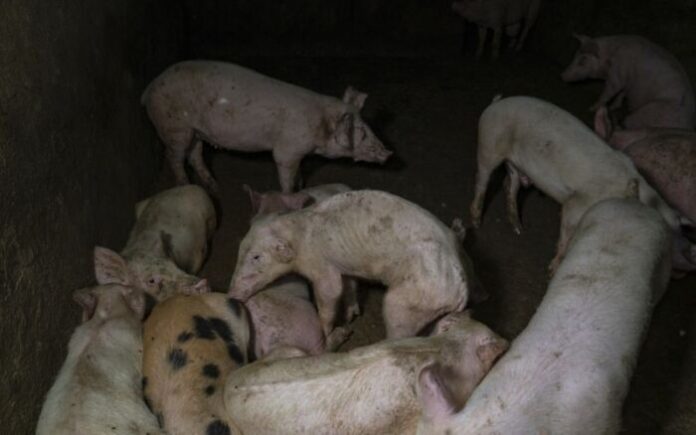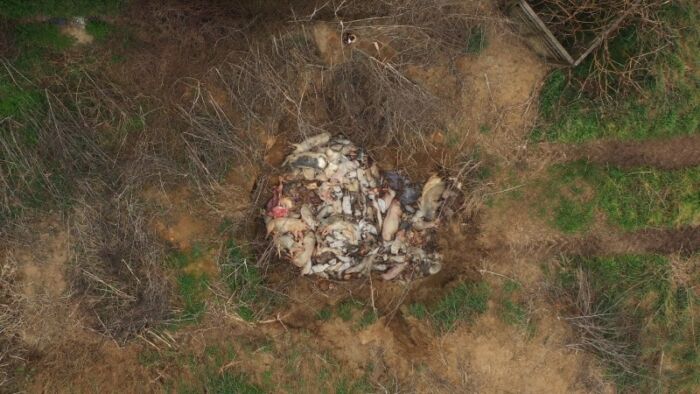
A frightening situation that discovered in the province of Cremona: a real landfill of dead pigs, with all the health and environmental consequences that this entails. Not to mention the precarious hygienic conditions in which live animals lived, with spaces infested with mice and cockroaches, mistreatment and beatings, illegal mutilations (systematic cutting of the tail, castration beyond 7 days).
With an exclusive video investigation for the campaign that ilfattoquotidiano.it in collaboration with the Lav has carried out on the health and environmental costs of meat, the journalist Giulia Innocenzi shows the images of a farm in the Cremona area, which hosts 3 thousand pigs, which are slaughtered for the production of DOP products that arrive on our tables. She also showed the illegal landfill where carcasses are thrown away to save on disposal costs. A practice carried out for many months, as shown by the internal images received by the Lav.
A situation that, as the experts explain, can cause pollution of the aquifer with the environmental dispersion of pathogens present in pigs and which can be transmitted, as well as from animal to animal, also from pig to man, as in the case of hepatitis E and salmonellosis. Without considering the risk posed by other animals which, by feeding on the carcasses, could act as an amplifier of these pathologies.
A situation that, evidently, no one had ever noticed, but of which images filmed for months, from February to September 2020 and, again, in February 2021 and received by the Anti-Vivisection League are witnesses.
Asked before his company, the owner admitted to throwing the pigs in the landfill to cut costs, but denies that there are any risks: “Diseases? But no, how do they manage to be transmitted? “.
Once the pit dug outside with carcasses of dead pigs was discovered, Giulia Innocenzi alerted the Forestry and, after a few hours, two veterinarians from the local company arrived, the Ats Val Padana di Cremona and the Nas carabinieri (Nuclei Antisofisticazioni and Health), which led to a complaint for environmental pollution. No seizure was carried out.
Immediately, the Ats Val Padana imposed urgent health prescriptions, others arrived in the following days. And, explained to ilfattoquotidiano.it Maurilio Giorgi, director of the Veterinary Prevention Department of the Ats Valpadana of Cremona, “the veterinary services are preparing all the documents that the judicial authority will evaluate in order to proceed, if necessary, with the contestation of the crime of mistreatment “.

It is not excluded, therefore, that there will be heavy penalties and seizure which, Giorgi explains, “in the immediate future would also have created the problem of managing live animals within the structure”. The Lav, on the other hand, has already filed a complaint for animal abuse with the Public Prosecutor’s Office.
“This production model is not only against animals – says Roberto Bennati, general manager of LAV – sent to the slaughterhouse, but also unsustainable in terms of impact and we ask that the national institutions start a food transition policy towards vegetable proteins and that stop the river of public money that allows animal husbandry to keep animals in this shameful condition, causing damage to the health of millions of citizens ”.
Precisely in terms of the health and environmental impact of meat consumption, LAV has recently released the results of an independent scientific research, carried out by Demetra, a consultancy company on sustainability: in one year, the community weighs 36.6 billion euros in costs “Hidden” generated by the consumption of meat in Italy. In fact, the cycle of production and consumption of meat, milk and eggs generates environmental and health damage whose costs are not included in the price that citizens pay at the supermarket checkout.
Considering the environmental and health impacts, 100 grams of pork correspond to 1 euro, while both cured meats (processed pork) and cattle reach 1.90 euros of costs not included in the purchase price, 50 cents is instead the additional cost of 100 gr of chicken.



































